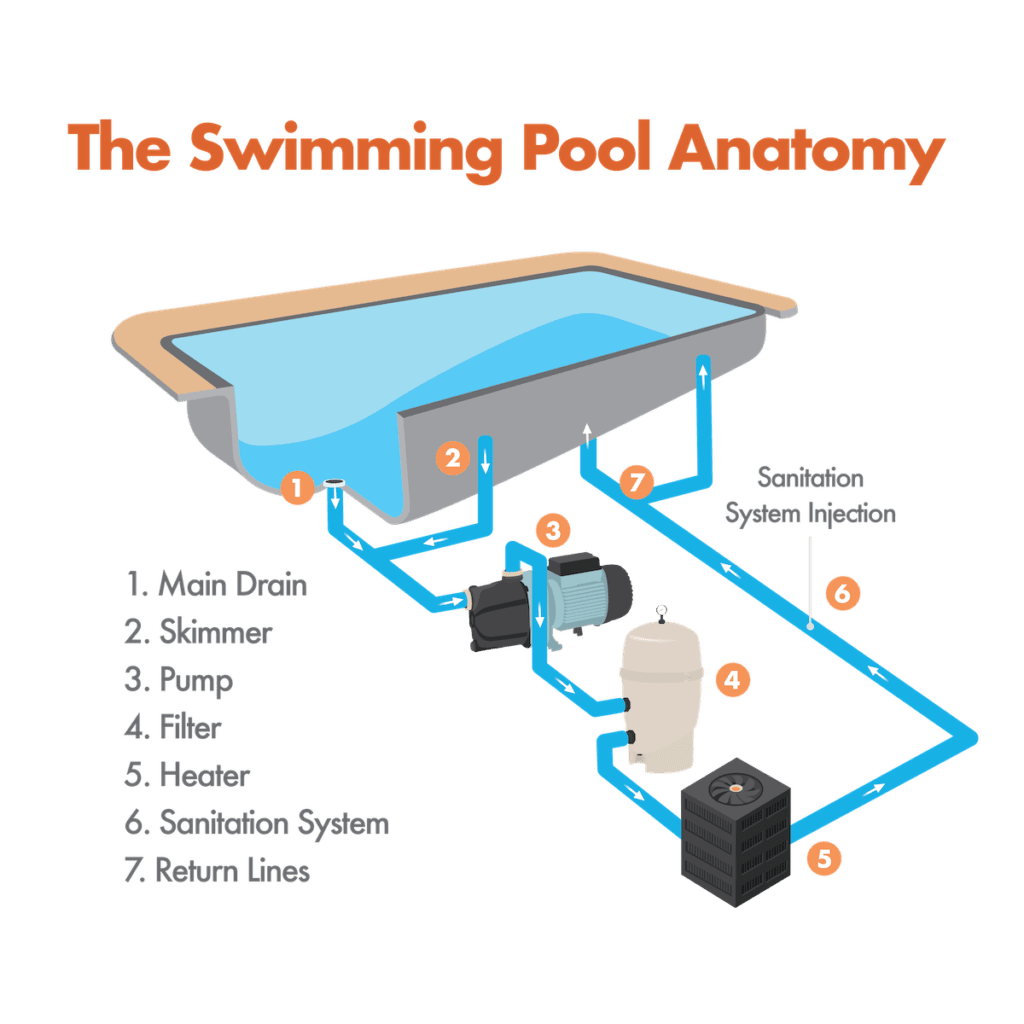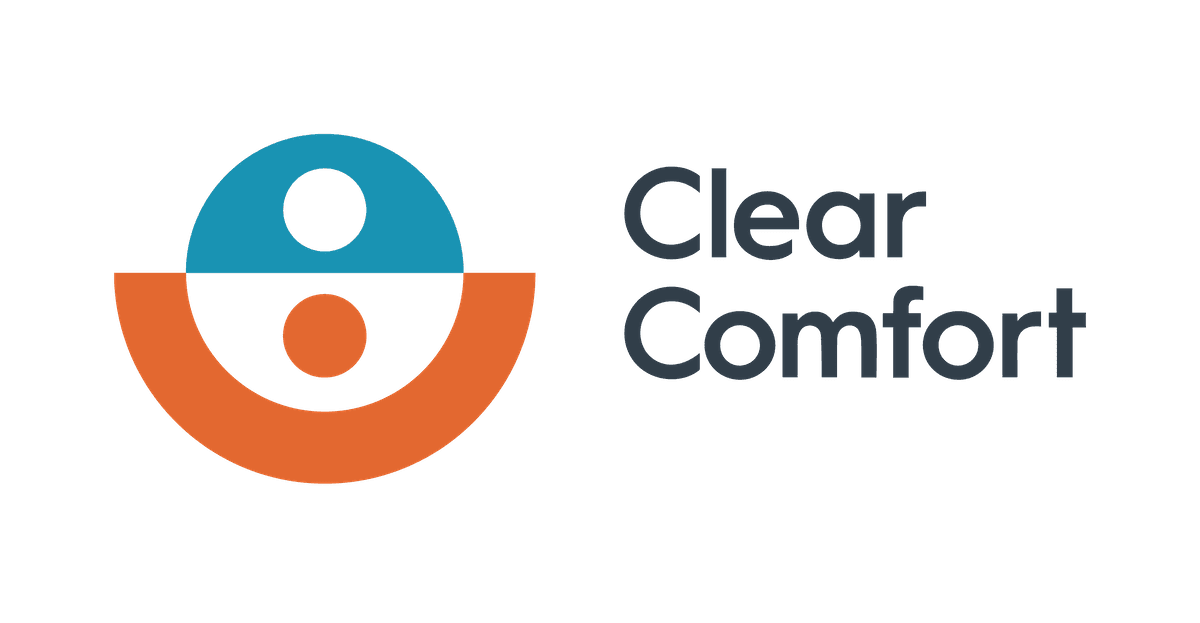Similar to how the systems in our bodies work to keep us healthy, your pool pad’s equipment works to keep your swimming pool clean, clear and functioning properly.
Your pool equipment pad is the assembly of components responsible for your pool’s circulation and filtration. The basic pool equipment pad components include a pump, filter and heater, but additional systems are typically added to reduce maintenance and improve swimming experiences.
If you want to set your pool up for success, you’ll need to understand the basic relationships of your pool equipment. To learn the roles of your swimming pool equipment pad, take a look at our guide below.

What Are the Roles of Your Pool Pad Equipment?
The Pool Pump
Good circulation is essential for maintaining a clean, clear pool, and your pool’s circulation is only as good as your pool pump. Just like the human heart’s responsibility to properly move blood through the body, the pump performs a similar function for the water in the pool. Your pool pump circulates by pulling water from the pool skimmers and main drain and pushing it into the filter. Without the proper circulation, your swimming pool water can become stagnant and vulnerable to health hazards. Stagnant pool water can lead to algae, parasites, bacteria, mold and other unwanted contaminants.
Pro Tip: For new swimming pool builds, variable speed and variable flow pumps are considered the “state of the art” standard. Variable-speed pumps have more energy-efficient motors than traditional single-speed pumps and can be set to the exact speed your pool requires, which can lead to savings on your energy bill.
The Pool Filter
When your pool pump circulates water, it is pushed through your filter to remove impurities. Similar to the digestive system, the pool filter is responsible for removing and filtering out unwanted particles and debris. Your pool filter’s internal filter media captures both the visible and invisible particulates to keep your pool clean and clear. Without proper filtration, built up impurities can result in a pool that looks and feels dirty.
When selecting the right filter for your pool, there are three possible choices; cartridge, sand and DE (diatomaceous earth). To choose the right pool filter, make sure you know your filter options and consult your local pool professional to advise the best fit for your swimming environment.
To maintain clean water and keep your pool filter operating properly, regularly clean the filter media to remove any collected debris. For sand and DE filters, you’ll also want to backwash the filter media. Cleaning and backwashing your filter media helps eliminate any added back pressure in the plumbing that could be forcing your pump to work harder. To monitor back pressure, pool filters come equipped with a PSI (pounds per square inch) gauge. For example, a high PSI reading usually means the filter is dirty and needs cleaning.
The Pool Heater
While some consider heaters a luxury option, it is best practice to have a heater installed on your pool equipment pad. Today’s pool heaters are both compact in size and energy efficient with varying options, including gas, solar or electric heat pumps. For swimming environments with a pool and spa combo set-up, heaters are required to help isolate the spa’s water temperature.
If you don’t have a pool heater, it can be easily added to your pool equipment pad after your pool has been built. Even in warmer climates, pool heaters are used to extend the swimming season into colder fall and winter months. Since your pool heater is exposed to the elements, like leaves, insects, etc., it must be inspected by a pool professional each year.
How to Set Up Your Pool Equipment Pad
Your pool pad design should be both functional and simple with room to maneuver and service the equipment with as few turns in the pipe as possible. It’s best practice to have enough space to walk, stand or kneel around the pool equipment and have all valves in the front for easy access and servicing. You’ll want all of your pool pad equipment installed in the proper order, which is pump, filter, heater, sanitizer, like AOP or another treatment system.
Your pool’s equipment pad will have two sides of exposed PVC plumbing that connect to the pool’s body of water:
The Suction Side
As the name suggests, this side sucks in the pool water to travel it through your pool’s filtration system. The skimmers, main drains and suction lines all help to carry the water into the circulation system.
Your pool pump plays an important role on the suction side plumbing and initiates the water to move from the pool to the filter. In assembly and proper operation of the pool pump, the suction side plumbing is connected to the pump normally using 3 way valves which control flow from the skimmers, main pool drains and spa drains. The pump is then connected to PVC plumbing leading to the filter.
The Pressure Side
Alternatively, the pressure, or return, side pushes water from the filtration system back into your pool with the return lines and jets.
The outlet on the filter is where the water transitions from the suction side to the pressure side plumbing. On the pressure side, the water travels downstream from the filter toward the heater and sanitation system.
After the pool heater in the closed loop is the exposed pressure side PVC leading back to the pool returns. This area can be as simple as returning water to the pool and spa or a bit more complex including manifolds that direct the water to water features like tanning deck bubblers, sheer descents, or slides.
Both the suction and the pressure sides are connected to the equipment pad to form a closed loop water filtration system. This closed loop of plumbing moves water from the pool through the filter in addition to circulating your pool water treatment systems.
In regards to how the suction and pressure side plumbing is designed, it is recommended to line up the pipes to come out of the ground in the front of the concrete pad. An ideal design will have the suction side pipes come up to the front of the pump with the return or pressure lines parallel a few feet to the right or left.
Additional Pool Equipment
Beyond the basic pump, filter and heater assembly on your pool equipment pad, there are additional systems that will deliver an improved swimming experience. Here are some additional pool equipment systems.
The Pool Water Sanitation System
If you want clean, fresh-feeling and healthy pool water, a good sanitation system is essential. There are many pool sanitation options to choose from, but not all are created equal. Sanitation systems can range from a simple floating device to more technically advanced inline and off-line systems. Traditional options include chlorinators and salt generators, or salt water pool systems. Other alternative systems include UV, ozone, combinations of UV + ozone, and Hydroxyl-Based AOP pool systems.
If you are looking for the right pool sanitation method for your home, download our free pool system comparison guide here.
The Booster Pump
In addition to your filter pump, booster pumps can be used for water features and certain in-floor and pressure-side pool cleaners. Unlike your pool filter and pump, booster pumps are installed on the return and pressure sides of the PVC plumbing after water has been filtered and to help accelerate the water’s PSI to its desired location.
The Pool Chiller
Chillers provide refreshing cool pool water for warmer climates and environments that tend to elevate the pool water temperature. Typically, pool chillers lower the water temperature by 5 to 10 degrees. If you want both warm and chill pool water temperatures, you can opt for a pool heater pump that includes a chiller. Heat pump chiller combo systems are able to inject heat into the pool and remove the heat from the pool water, depending on the weather.
Your pool equipment pad is home to the essential systems that keep your swimming environment clean, healthy and enjoyable. By understanding the functionality of your swimming pool’s pump, heater and filter, you can spend more time enjoying your pool and less time maintaining it.
Looking for low-touch pool sanitation that doesn’t compromise your health, equipment or surfaces? Today’s top pool pros recommend Clear Comfort’s AOP pool treatment for the easiest way to get the healthiest water with drinking-water chlorine levels. To hear a real pool pro’s review, click here.
Gabrielle Palumbo
Marketing Director



